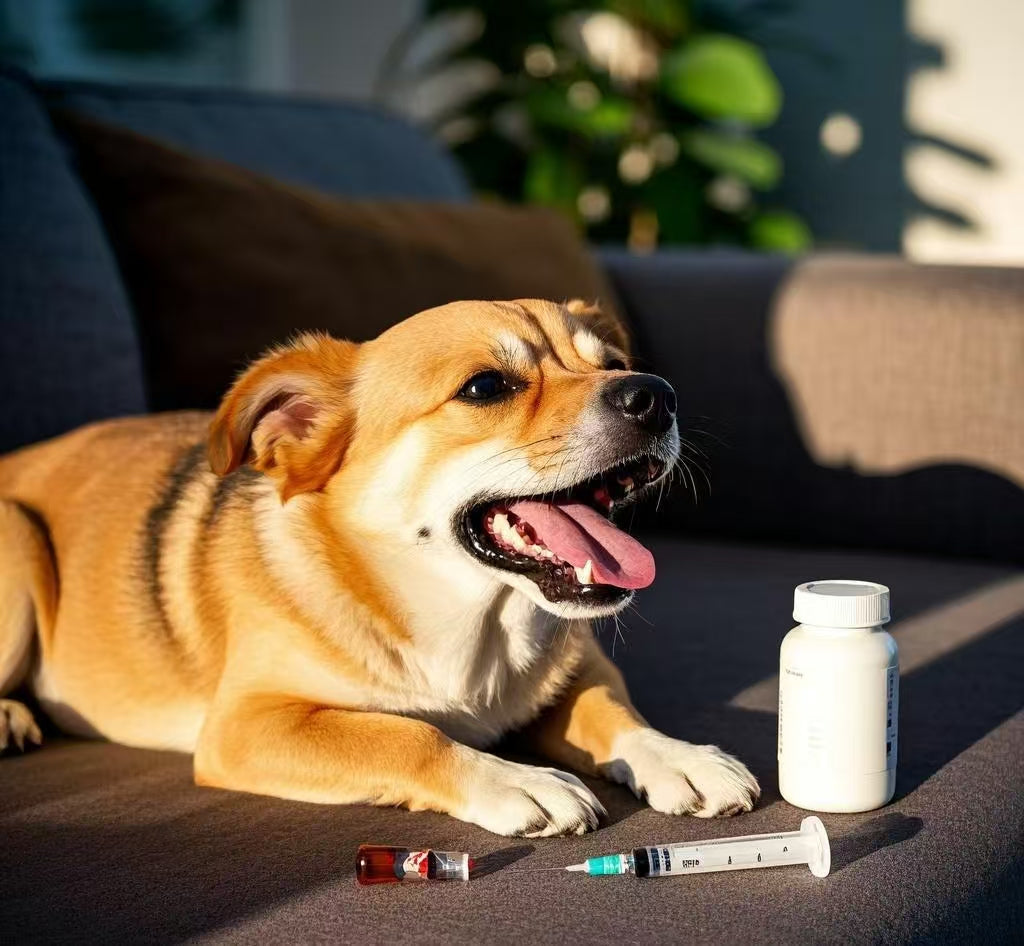Canine coronavirus disease is an acute infectious disease caused by canine coronavirus and is characterized by frequent vomiting, diarrhea, depression, anorexia and other gastroenteritis symptoms.
This disease can occur throughout the year, but is more common in winter. Dogs of all ages, breeds and genders are susceptible, with the highest incidence among 2 to 4 months old. The incubation period of this disease is 1 to 4 days. The main source of infection is sick dogs and virus-carrying dogs. Sick dogs excrete the virus through the respiratory tract and digestive tract with saliva, nasal fluid and feces, contaminating feed, drinking water, cages and the surrounding environment, and passing it directly or indirectly to susceptible animals. The virus mainly damages the spleen and stomach after infection, so the main symptoms include vomiting, diarrhea, depression, anorexia and other symptoms.
[Main Symptoms] The sick dog is lethargic, weak, and anorexic. Initially, vomiting lasting for several days can be seen, and then diarrhea begins. The feces are porridge-like or watery, yellow-green or orange, foul-smelling, and mixed with varying amounts of mucus. Occasionally, there may be A small amount of blood is seen in the feces, which is clinically difficult to distinguish from canine parvovirus disease. However, canine coronavirus infection lasts longer, is intermittent, and can recur. Sick dogs are prone to secondary intussusception. Although the incidence rate is high, the fatality rate often decreases with age, and it almost does not cause death in adult dogs. An autopsy revealed severe dehydration of the corpse, gastrointestinal dilation, intestinal mucosal congestion and bleeding, mesenteric lymph node enlargement, intestinal mucosal shedding, which are typical features of the disease, and liver and gallbladder enlargement.
[Treatment] Mainly adopts a combination of pathogenic therapy such as antiserum injection and symptomatic treatment. To control secondary infections, antibiotics may be used.
Traditional Chinese medicine treatment should clear away heat and detoxify, cool blood and stop dysentery. You can use 15g of Pulsatilla, 15g of Curcuma, 10g each of Coptidis, Scutellaria and Phellodendron, 15g of Bamboo Ru, 10g of White Peony, and 10g of Citrus Aurantii, decoct into 500ml, remove the residue, then heat and concentrate to 250ml, bottle for later use. 5ml for dogs weighing less than 3kg, 10ml for dogs 3~6kg, and about 30ml for large dogs. When using, warm the liquid to about 39°C for enema. Once a day, use 2 to 3 times. Fast for 24 hours after taking the medicine and give sufficient oral rehydration salt solution; those who are dehydrated can use Shengmai Drink; those who do not want to eat can use Pingweijing or Huoxiang Zhengqi Water.
Integrated traditional Chinese and Western medicine treatment, serum and Western medicine injections can be injected into acupoints. Commonly used acupoints are Baihui, Pishu, Houhai and other acupoints.
[Prevention] Canine coronavirus inactivated vaccine or attenuated vaccine can be used for preventive injection.

